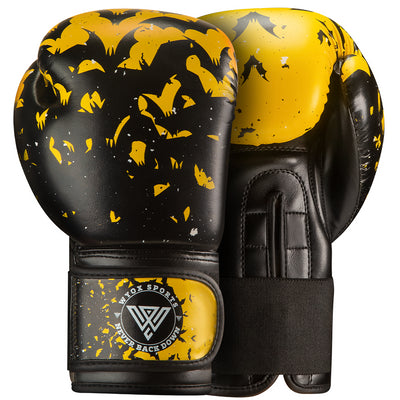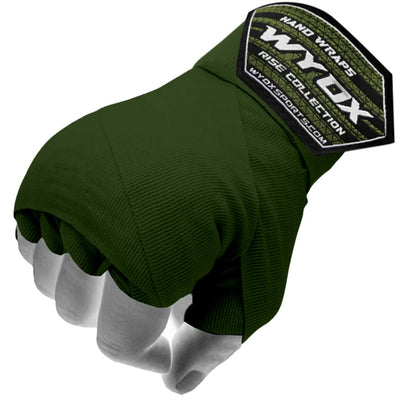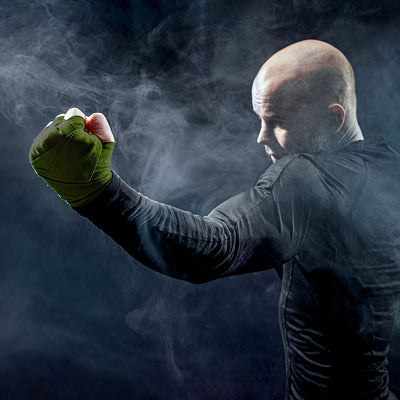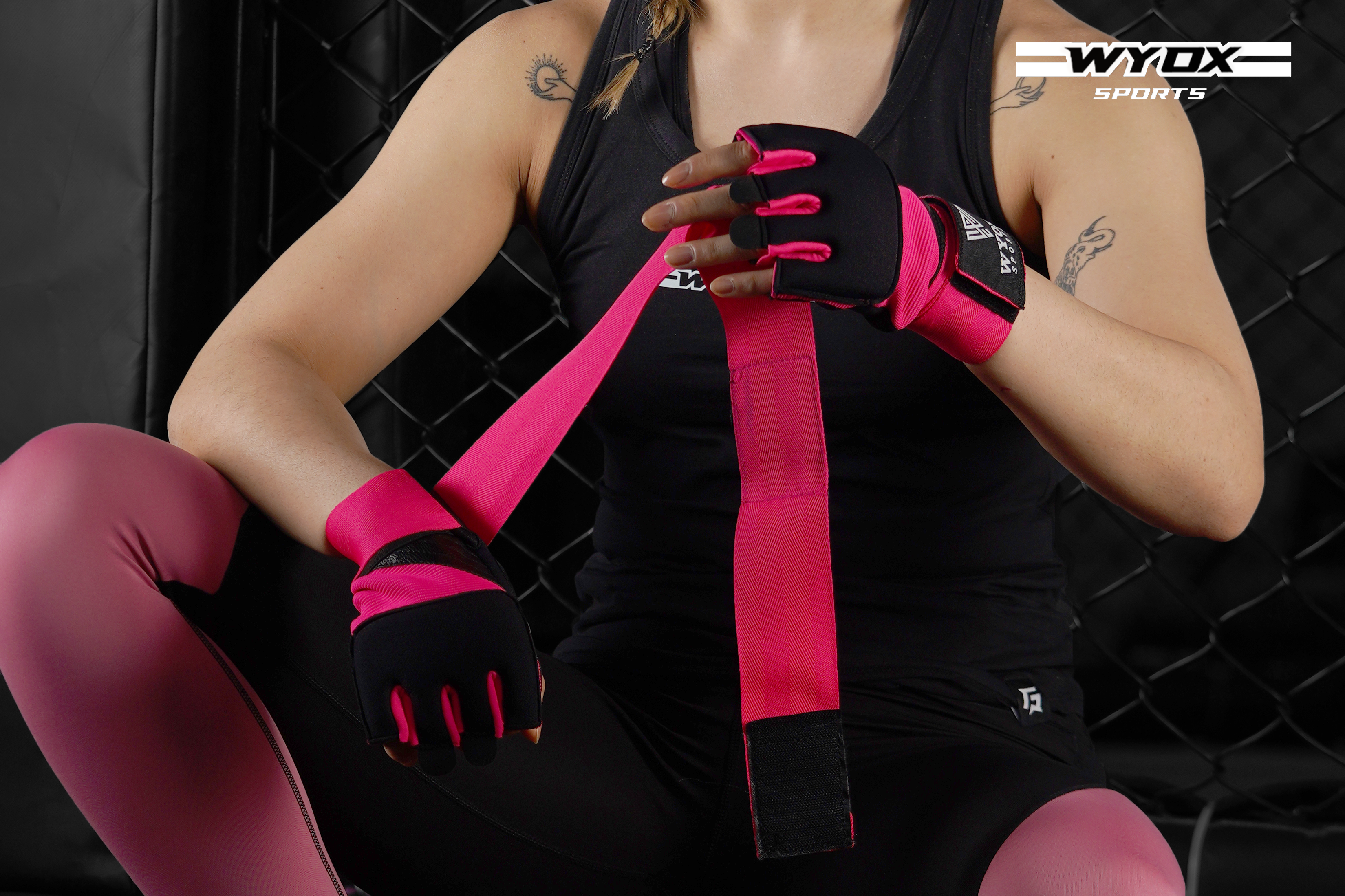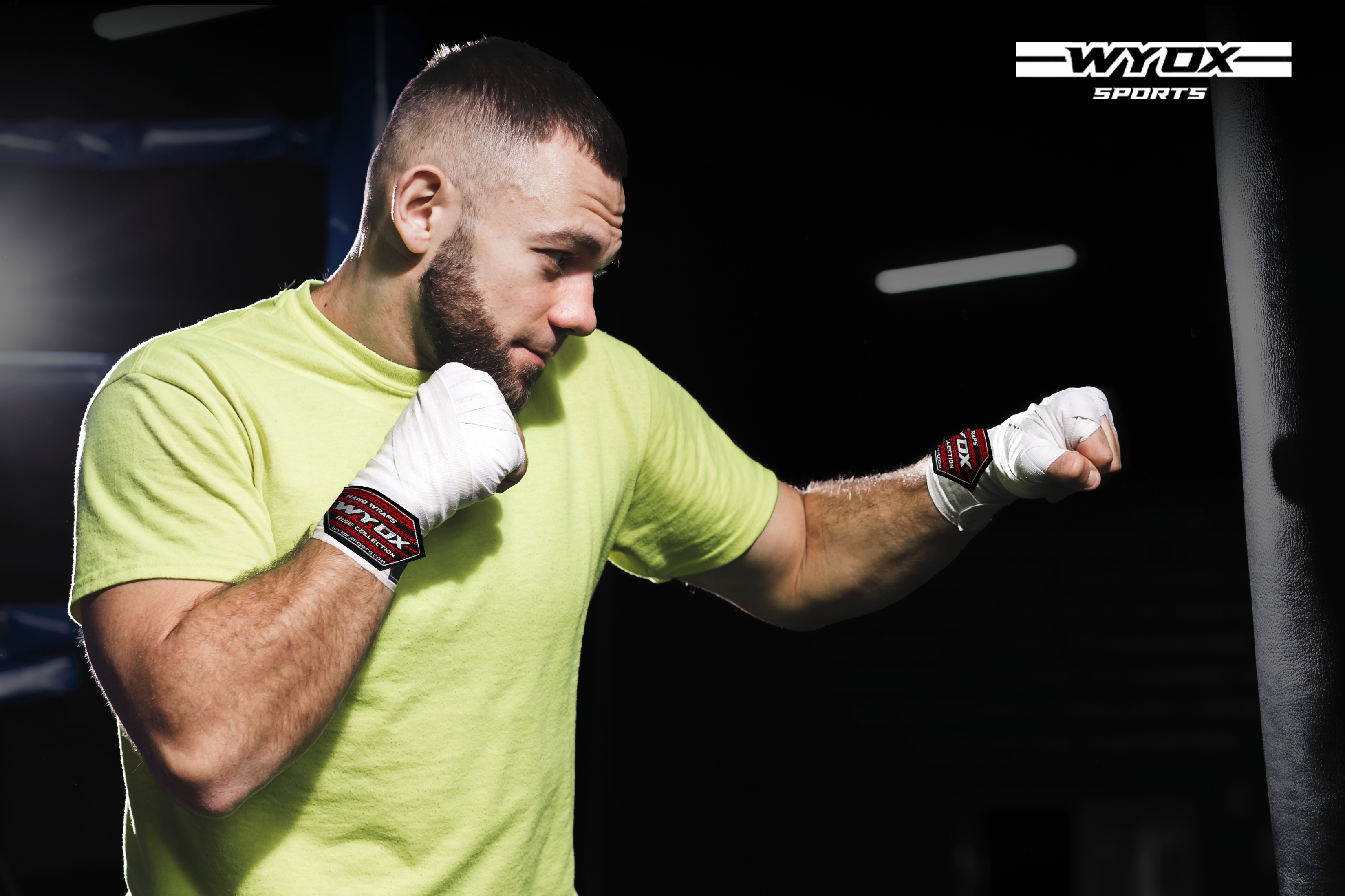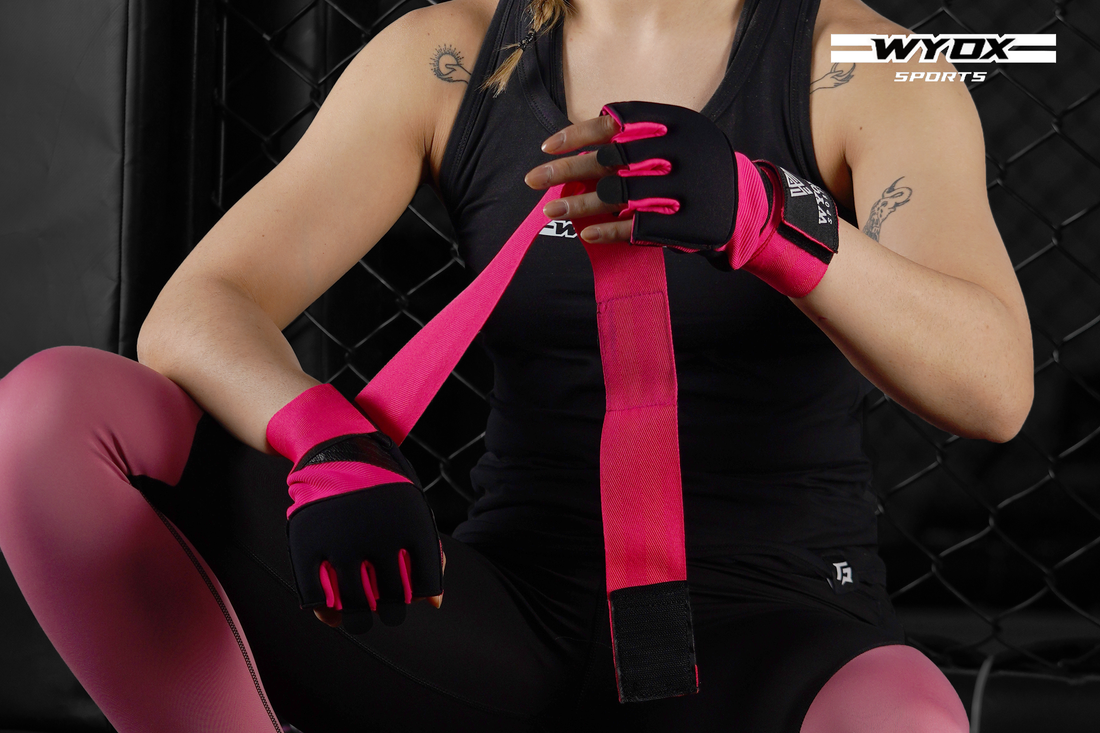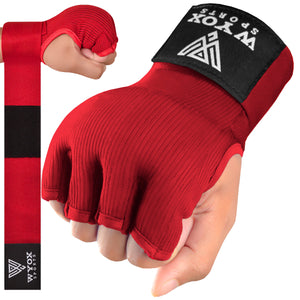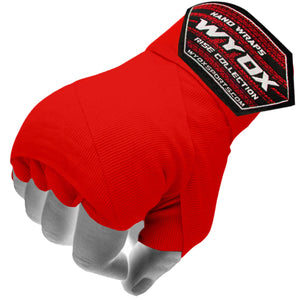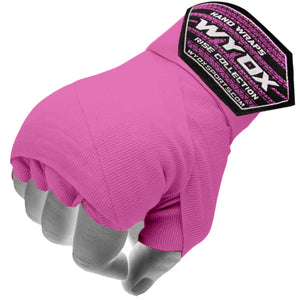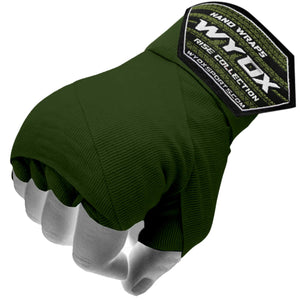If you are a fighter, then your hands are your most precious weapons. Your hands produce those punches and those throws and all those strikes that bring a fight to life. Have you ever thought what would happen if your knuckles cracked from the sheer force of your own punches? Or maybe if your wrists get injured? Would you be able to fight?
NO!
You need to protect your hands before you end up on the bench for a long long time. Being on the bench and having to go through that pain is nothing desirable, not for a fighter at all! Without strong hands, you can’t fight, so protect them.
This is where hand wraps come in. They aren’t just pieces of fabric. They are armor for your fists, shields for your bones, and the silent protectors of your performance. A proper wrap isn’t just about protection—it’s about confidence. The confidence to hit harder, train longer, and fight without hesitation.
But not all wraps are created equal. Do you need elastic or cotton wraps? 120” or 180” hand wraps? Disposable or reusable wraps? The wrong choice could mean discomfort, weak support, or worse—an injury that takes you out of the game.
In this guide, we break down everything you need to know about hand wraps: the different types, the right hand wrap sizes, and the best techniques to ensure your hands are wrapped for war—so you can train, fight, and dominate without limits.

Types of Hand Wraps
Hand wraps come in different types, each offering unique benefits. Choosing the right one depends on your training needs and personal preference.
Reusable Hand Wraps vs. Disposable Wraps
Do we have disposable wraps out there on the market? Are boxing wraps reusable? Lets see:
- Reusable hand wraps are made of durable fabric and can be washed and used multiple times. They are the most common choice for boxers, MMA fighters, and fitness enthusiasts.
- Disposable wraps (like gauze and tape) are often used in professional fights. They provide a custom fit and strong support but can only be used once.
Elastic vs. Cotton Hand Wraps
- Elastic hand wraps (sometimes called "Mexican-style wraps") have a slight stretch, allowing for a snug fit. They conform to the shape of your hand and provide better flexibility.
- Cotton hand wraps are non-stretch and maintain a firm wrap. They are durable and comfortable but may feel stiffer compared to elastic wraps.
Gauze Bandage Wraps
- These are commonly used in professional fights, applied by a coach or cornerman using gauze and athletic tape.
- They offer a tight, protective fit but require wrapping skills and can’t be reused.
Herringbone Hand Wraps
- Made from a heavier weave of cotton, herringbone wraps are a traditional style used by many fighters.
- They are strong, provide solid wrist support, and last a long time with proper care.
Choosing the Right Hand Wrap Size
Fighter hand wraps come in different lengths, mainly 120 inches (10 feet) and 180 inches (15 feet). Choosing the right boxing hand wrap lengths depends on hand size, glove size, and how much padding you prefer.
120 vs 180 Hand Wraps: Which One Should You Use?
- 120-inch wraps are best for smaller hands or for those who prefer less bulk under their gloves. They are easier to put on and take less time to wrap. For many, 120 inches is the best boxing hand wrap length.
- 180-inch wraps are the preferred choice for bigger hands or extra protection. They allow more revolutions around the hand and wrist, offering better support but may feel bulkier under gloves.
How Hand Wrap Sizes Affect Wrist and Knuckle Support
- Longer wraps (180”) allow extra padding around the knuckles and wrist, reducing the risk of injury. Most fighters always go for 180 inch raps. This is the right boxing hand wrap length for them.
- Shorter wraps (120”) provide basic protection without adding too much bulk.
- If you have wrist issues or hit with a lot of power, a longer wrap gives you more layers of support. It's not about 120 vs 180 hand wraps. In the end your comfort and protection matter the most.

How to Wrap Your Hands Properly
Wrapping your hands correctly helps prevent injuries and ensures a firm grip inside your gloves. There are different techniques for boxing and MMA, but the goal is always the same: support the wrist, protect the knuckles, and keep the wrap secure without cutting off circulation.
MMA Hand Wrap Technique vs. Boxing Wrap Technique
- MMA hand wrapping uses shorter wraps and allows more finger movement since MMA gloves are smaller and open-fingered. The focus is on knuckle padding and wrist support while keeping the fingers free.
- Boxing hand wrapping involves more revolutions around the knuckles and wrist because boxing gloves are larger and require more padding for impact absorption.
Step-by-Step Guide to Wrapping Your Hands
- Start with the thumb loop – Place your thumb through the loop and wrap across the back of your hand to secure it.
- Wrap around the wrist – Go around your wrist 2-3 times for support.
- Cover the knuckles – Wrap over your knuckles 2-3 times to cushion them.
- Wrap between the fingers – Go between each finger to prevent the wrap from bunching up.
- Secure the wrist again – Finish by wrapping around your wrist again and securing the wrap with the Velcro or tie-off.
Common Wrapping Mistakes to Avoid
- Wrapping too tight – This can cut off circulation and make it uncomfortable to train.
- Wrapping too loose – If the wrap shifts during training, it won’t protect your hand properly.
- Not wrapping between fingers – This can cause the wrap to bunch up and reduce knuckle protection.
- Ignoring the wrist – Without proper wrist support, you risk sprains or strains during punches.
With the right hand wrap and the right MMA hand wrap technique, you can train safely and improve your performance without worrying about injuries.
Additional Features to Consider
It is true that the length of your hand wrap matters and so does the type of combat sport you are going to use them in. But, there are some other factors that matter a lot too. Let see what those are:
Cotton Padding for Extra Protection
Some fighters add extra padding under their hand wraps, especially around the knuckles. This helps absorb impact and reduces the risk of bruising or swelling.
- Extra padding is useful for heavy hitters or those training on hard punching bags.
- It can be achieved by using folded gauze or specialized gel inserts under the wraps.
- More padding means more bulk, which might make fitting into gloves slightly tighter.
Breathability & Material Quality
The material of your fighter hand wraps plays a big role in comfort and durability.
- Cotton wraps are soft and absorb sweat well, but they can feel stiff at times.
- Elastic wraps (Mexican-style wraps) stretch slightly, offering a snug fit without being too tight.
- Breathable wraps dry faster and help prevent bacteria buildup, reducing odor over time.
If you train frequently, choosing wraps that dry quickly and remain fresh after multiple uses is important.
Velcro vs. Traditional Tie Wraps
There are traditional fighter hand wraps and there are velcro ones too. If you are a classic fighter, you may fall for the traditional ones. They are very firm in your hands and give optimal stability. The velcro ones are so easy, you will fall in love with them. Let’s check them in detail:
- Velcro wraps are easy to put on and take off, making them more convenient for daily training. However, the Velcro can wear out over time.
- Tie wraps use fabric to secure the wrap instead of Velcro. These last longer but take more time to put on and adjust.
If you train often, Velcro wraps are more practical, while tie wraps can be a good option for fighters who prefer a traditional, long-lasting wrap.

Style & Customization
Hand wraps are not just about protection—they can also be a way to show personality and match your gear.
Variety of Colors and Designs Available
Fighter hand wraps come in many colors, from classic black and white to bright red, blue, and neon shades. Some brands even offer patterned or custom designs.
- Lighter colors may show dirt and sweat more easily.
- Darker or patterned wraps help hide stains and look fresher for longer.
Fighter Hand Wraps: How Professionals Customize Their Wraps
Professional fighters often customize their hand wraps to improve comfort and support.
- Some fighters use extra layers on their knuckles for better protection.
- Others wrap their thumb and wrist more tightly to prevent injuries.
- Some pros use branded wraps with their name or gym logo for a personal touch.
Matching Wraps with Gloves for Aesthetics and Functionality
Many fighters prefer to match their fighter hand wraps with their boxing gloves.
- Matching colors give a more coordinated look.
- Some fighters choose contrasting colors to make their gear stand out.
- Choosing wraps that match glove padding thickness ensures a snug fit.
While looks are secondary to function, having wraps that complement your gear can add confidence and motivation during training.
Care & Maintenance of Hand Wraps
Taking care of your hand wraps properly helps them last longer and keeps them hygienic. Sweat and bacteria can build up quickly, so regular cleaning is necessary.
How to Wash and Clean Reusable Hand Wraps Properly
- Hand washing is the best method. Use warm water and mild soap.
- If using a washing machine, place the wraps in a laundry bag to prevent tangling.
- Always air dry your wraps. Do not use a dryer, as the heat can weaken the fabric and Velcro.
How Long Do Boxing Wraps Last? Knowing When to Replace Them
- Hand wraps should be replaced when they become too loose, frayed, or develop an odor that doesn’t go away after washing.
- If the Velcro no longer sticks properly, the wraps may shift during training, reducing protection.
- If you train several times a week, it’s a good idea to have multiple pairs of wraps and rotate them to avoid wearing one pair out too quickly.
Storage Tips to Keep Your Wraps Fresh and Odor-Free
- After each use, hang wraps to dry immediately to prevent bacteria buildup.
- Store wraps in a breathable bag rather than sealing them in an airtight container.
- Sprinkling a little baking soda on wraps before washing can help remove odor.
Keeping your wraps clean ensures they remain effective and comfortable for a long time.
Also Read This Article: The Role of Inner Gloves and Hand Wraps in Boxing
Conclusion
Hand wraps are one of the most essential pieces of gear for any boxer, MMA fighter, or martial artist. They protect your hands from injuries, provide wrist support, and ensure you can train effectively without discomfort. When choosing hand wraps, consider:
- The type of wrap (elastic, cotton, or gauze)
- The length (120” vs. 180”) based on your hand size and protection needs
- Additional features like extra padding, breathability, and Velcro vs. tie-off options
- Proper MMA hand wrap technique to maximize support and comfort
Investing in high-quality wraps and taking care of them properly will help you train longer and harder without worrying about injuries. Whether you're a beginner or a professional, the right hand wraps can make a big difference in your performance and safety.

